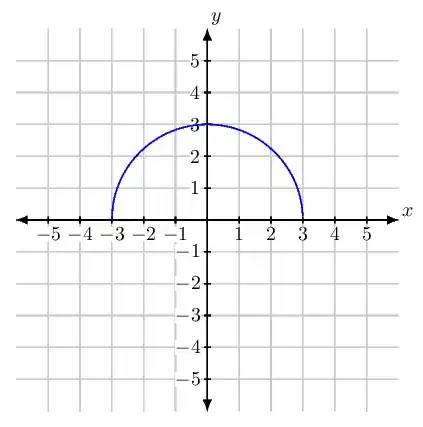What is the domain and range of real function $f(x) = \sqrt{9 − x^2}$?
In order to find the function's domain, you need to take into account the fact that, for real numbers, you can only take the square root of a positive number. In other words, in order for the function to be defined, you need the expression that's under the square root to be positive. \begin{align*} 9−x^2 & \geq 0\\ x^2 & \leq 9\\ |x| & \leq 3 \end{align*} This means that you have $x \geq −3$ and $x \leq 3$.
Therefore, the domain of the function will be $x \in [−3,3]$.
But what will be the range?
Help appreciated!
